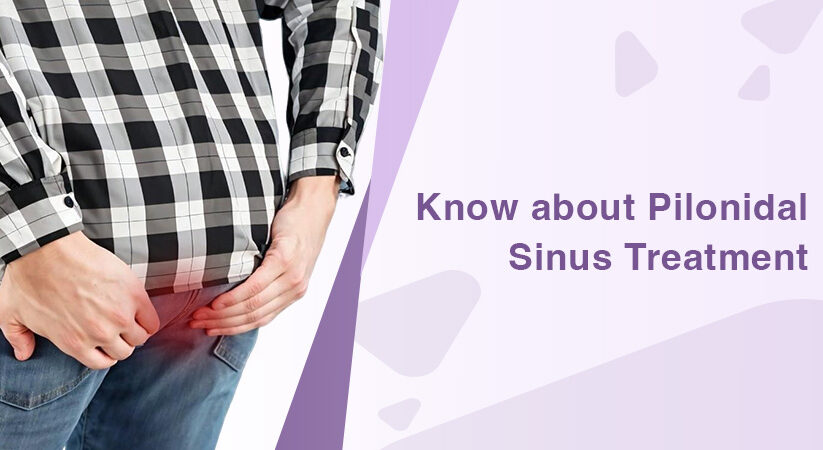People who sit for longer periods or have lots of thick body hair may start experiencing some pain at the top of the cleft in their buttocks. You may see a small opening or a hole, and it may cause some discomfort. This is called the pilonidal sinus. If this condition is not causing any discomfort, you may not need any treatment. However, if you experience pain or other symptoms like pus discharge, you must understand the different types of pilonidal sinus treatment options to seek timely medical care. Let’s understand the causes, symptoms, and signs you should watch out for when you have a pilonidal sinus.
What is the Pilonidal Sinus?
A pilonidal sinus is a narrow tract beneath the skin. It most commonly develops at the top of the buttocks, in the crease between the cheeks.
If infected, it will become a painful abscess or cyst. The cyst will tend to trap hair, dirt, and dead skin. It will leak pus or blood and may have an odour.
This condition primarily occurs in men and young adults. It’s more prevalent in individuals who spend long periods sitting, such as cab drivers or office employees.
Types of Pilonidal Sinus
Knowing the various types of pilonidal sinus can assist you in recognising the signs early enough to obtain appropriate treatment. The types vary in how they present and how severe they are.
- Acute Pilonidal Abscess: This is a painful, inflamed lump of pus that forms rapidly when a pilonidal sinus gets infected. The swelling occurs, and the infection may cause severe pain.
- Chronic Pilonidal Sinus: Chronic conditions are long-standing and are frequently associated with persistent or recurring sinus tracts and cysts. These are difficult to diagnose, as inflammation and scarring can obscure the condition over time.
- Pilonidal Cyst: A pilonidal cyst is a sac-like structure under the skin. It tends to contain hair, fluid, or pus. Left untreated, it can become infected and develop into an abscess, which poses additional problems.
- Pilonidal Sinus Tracts: These are tubes or tracts within the skin, joining the surface to more internal tissues. They may entrap hair, debris, and dirt, which may become infected and painful if they are not treated.
- Pilonidal Pit: A pilonidal pit is a tiny visible pore in the skin, typically occurring at the crest of the buttocks. It may be an initial manifestation of a pilonidal sinus and is possibly an indication of requiring medical attention.
What are the Causes of a Pilonidal Sinus Infection?
The precise reason behind an infected pilonidal sinus is not completely known. It’s believed, though, to be due to a combination of factors, such as hormonal activity following puberty, hair growth, and irritation caused by sitting or tight clothing.
When activities such as sitting and creating repeated friction occur, the hair within the affected area can become lodged under the skin. The body recognises the embedded hair as an invader and mounts an immune response against it as if it were a splinter.
This results in the formation of a cyst over the embedded hair. Several sinuses will develop and interconnect under the skin in other cases.
Identifying a Pilonidal Sinus and Recognising Signs of Infection
At first, you may not see much of a symptom other than a little depression in the skin that looks like a dimple. But when this spot gets infected, it becomes a cyst (fluid-filled sac) or an abscess (swollen, inflamed tissue and pus) very rapidly.
Symptoms of an infection are:
- Painful sitting and sometimes standing
- Swollen skin around the cyst
- Red, tender skin on the affected area
- Pus or blood discharge from the abscess, usually with a bad odour
- Hair protruding from the sinus opening
- Development of several sinus tracts or openings in the skin
- You may also have a low-grade fever in some instances.
Conclusion
Pilonidal sinus can begin as a minor skin condition, but if left untreated, it can result in chronic infections and pain. Being aware of the signs, knowing the treatments, and sticking to post-care can be the turning point in recovery. Managing early symptoms and maintaining proper hygiene can help avoid complications or recurrence.
If you have pain, swelling, or discharge around your tailbone, don’t just brush it aside. Early intervention makes you heal quicker and reduces the risk of future complications. For professional consultation and cutting-edge treatment, consult with specialists at Chirag Global Hospitals.
Continue reading here to know more: Pilonidal Sinus





Comments